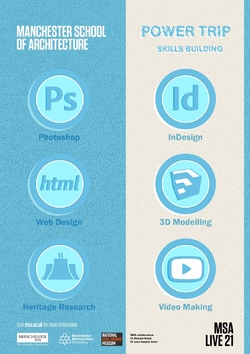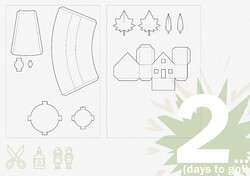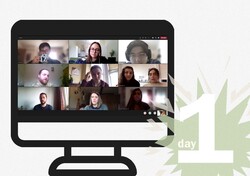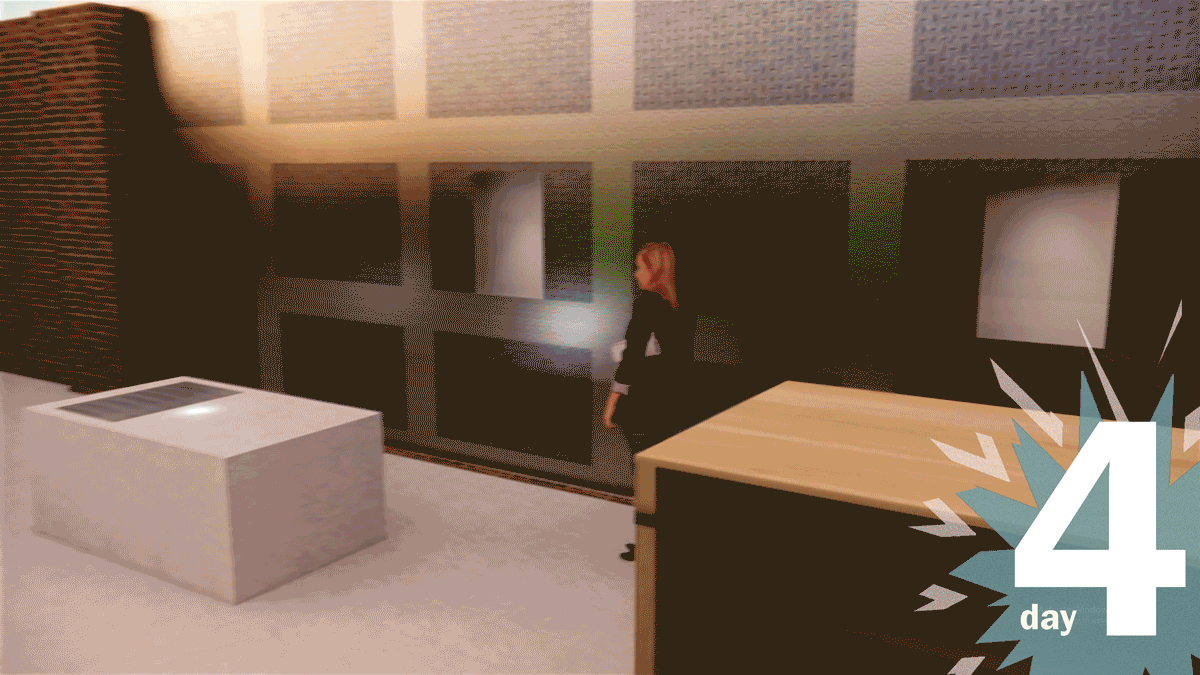Activities and Skills: The two weeks will be divided between skill building, fostering social connections, and digging into the oftentimes unspoken value of architectural heritage. Our aim is to create an environment that will facilitate learning through hands-on work with different softwares where the starting point is each team-member’s skills and experience.
The first week will focus on creating content for the final product (an online exhibition) by working with Photoshop, InDesign, Illustrator, 3D modelling software – such as Sketchup and Rhino- and open-source video creation software. We will offer insights into the best uses for each program (photo-editing, layout design, 3D modelling or vectorial work) and tips and tricks to improve workflows that we’ve learnt over the years. There will be two guest talks: one focusing on website design and online exhibition curation, while the other – offered by our collaborators – will offer an overview of the value and history of post-war industrial architecture– specifically, power stations and coal mines.
The second week will be mainly dedicated to building the online exhibition and making it an interactive and engaging experience for future users. At this point, the historical significance that has shaped this project and its wider social value will become ever more evident. The final site will be a platform for school children to learn through interactive experiences about the legacy of these architectures. There is potential for a “virtual school trip”, where the success of the project will be visible through its live-testing and reception by school children and their teachers.
The first week will focus on creating content for the final product (an online exhibition) by working with Photoshop, InDesign, Illustrator, 3D modelling software – such as Sketchup and Rhino- and open-source video creation software. We will offer insights into the best uses for each program (photo-editing, layout design, 3D modelling or vectorial work) and tips and tricks to improve workflows that we’ve learnt over the years. There will be two guest talks: one focusing on website design and online exhibition curation, while the other – offered by our collaborators – will offer an overview of the value and history of post-war industrial architecture– specifically, power stations and coal mines.
The second week will be mainly dedicated to building the online exhibition and making it an interactive and engaging experience for future users. At this point, the historical significance that has shaped this project and its wider social value will become ever more evident. The final site will be a platform for school children to learn through interactive experiences about the legacy of these architectures. There is potential for a “virtual school trip”, where the success of the project will be visible through its live-testing and reception by school children and their teachers.
Posted 1 Mar 2021 17:14





